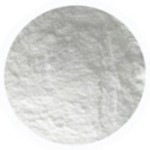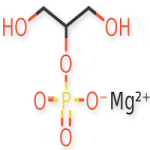CAS Number 927-20-8, Magnesium Glycerophosphate BP Ph Eur Grade Manufacturers Exporters







CAS Number 927-20-8, Magnesium Glycerophosphate Manufacturer Exporter
For Properties Specifications of Magnesium Glycerophosphate Click Properties, Specifications of Magnesium Glycerophosphate Manufacturer.
For Uses of Magnesium Glycerophosphate Click Uses of Magnesium Glycerophosphate Manufacturer.
For For SDS MSDS Sheet of Magnesium Glycerophosphate Click SDS Safety Data Sheet MSDS Sheet of Magnesium Glycerophosphate Manufacturer.
The Properties and Specifications of Magnesium Glycerophosphate:
Magnesium Glycerophosphate BP Ph Eur Grade Specifications
Ph Eur
C3H7MgO6P -- 194.4 -- CAS 927-20-8
DEFINITION
Mixture, in variable proportions, of magnesium salts of (RS)-2,3-dihydroxypropyl phosphate and 2-hydroxy-1-(hydroxymethyl)ethyl phosphate, which may be hydrated.
Content: 11.0 per cent to 12.5 per cent of Mg (dried substance).
CHARACTERS
Appearance: White or almost white powder, hygroscopic.
Solubility: Practically insoluble in ethanol (96 per cent). It dissolves in dilute solutions of acids.
IDENTIFICATION
A. Mix 1 g with 1 g of potassium hydrogen sulphate in a test tube fitted with a glass tube. Heat strongly and direct the white vapour towards a piece of filter paper impregnated with a freshly prepared 10 g/l solution of sodium nitroprusside. The filter paper develops a blue colour in contact with piperidine.
B. Ignite 0.1 g in a crucible. Take up the residue with 5 ml of nitric acid and heat on a water-bath for 1 min. Filter. The filtrate gives reaction (b) of phosphates.
C. It gives the reaction of magnesium.
TESTS
Solution S: Dissolve 2.5 g in carbon dioxide-free water prepared from distilled water and dilute to 50 ml with the same solvent.
Appearance of solution: Solution S is not more opalescent than reference suspension.
Acidity: Dissolve 1.0 g in 100 ml of carbon dioxide-free water. Add 0.1 ml of phph solution. Not more than 1.5 ml of 0.1 M sodium hydroxide is required to change the colour of the indicator.
Glycerol and ethanol (96 per cent)-soluble substances: Maximum 1.5 per cent.
Shake 1.0 g with 25 ml of ethanol (96 per cent) for 2 min. Filter and wash the residue with 5 ml of ethanol (96 per cent). Combine the filtrate and the washings, evaporate to dryness on a water-bath and dry the residue at 70C for 1 h. The residue weighs a maximum of 15 mg.
Chlorides: Maximum 0.15 per cent.
Phosphates: Maximum 0.5 per cent.
Sulphates: Maximum 0.1 per cent.
Iron: Maximum 150 ppm.
Heavy metals: Maximum 20 ppm.
Loss on drying: Maximum 12.0 per cent, determined on 1.000 g by drying in an oven at 150C for 4 h.
The Uses of Magnesium Glycerophosphate:
It is used as an oral magnesium supplement for the treatment of patients with chronic magnesium loss or hypomagnesaemia. Magnesium Glycerophosphate is used for Magnesium deficiency, Heartburn, Food digestion, High blood pressure, High level of cholesterol. It is used as a nutritional ingredient to provide magnesium and phosphorus for enrichment of dairy products. It is also used as a laxative for constipation.
The MSDS-SDS Hazard Statement of Magnesium Glycerophosphate:
Magnesium Glycerophosphate SDS, Safety Data Sheet
MSDS Sheet, Material Safety Data Sheet 13-Jan-23
1. Product Identification
Product Name & Other Names: Magnesium Glycerophosphate or Glycerol phosphate Magnesium salt.
CAS No.: 927-20-8
EINECS EC Number: 213-149-3
Molecular Weight: 194.4
Chemical Formula: C3H7MgO6P
Relevant uses and uses advised against (if any): Laboratory and Industrial Manufacturing Use.
2. Hazards Identification
GHS, Globally Harmonized System Classification in accordance with 29 CFR 1910
Classification according to Regulation (EC) No 1272/2008
Not a hazardous substance or mixture according to Regulation (EC) No. 1272/2008.
This substance is not classified as dangerous according to Directive 67/548/EEC.
Labeling according to GHS & Regulation (EC) No 1272/2008
GHS Label Elements NONE |
Signal Words: None
Precautionary statements:
P261: Avoid breathing dust/fume/gas/mist/vapors/spray.
P262: Do not get in eyes, on skin, or on clothing.
P281: Use personal protective equipment as required.
P302+P352: IF ON SKIN: Wash with plenty of soap and water.
P304+P340: IF INHALED: Remove victim to fresh air and keep at rest in a position comfortable for breathing.
P305+P351+P338: IF IN EYES: Rinse cautiously with water for several minutes. Remove contact lenses, if present and easy to do. Continue rinsing.
P337+313: If eye irritation persists get medical advice/attention.
3. Composition/Information on Ingredients
Product Name & Other Names: Magnesium Glycerophosphate or Glycerol phosphate Magnesium salt.
CAS No.: 927-20-8
EINECS EC Number: 213-149-3
4. First Aid Measures
Always seek medical advice after the first aid treatment.
Inhalation: If inhaled, remove to fresh air. If not breathing, give artificial respiration. If breathing is difficult, give oxygen. Get medical attention.
Ingestion: Not expected to require first aid measures. If large amounts were swallowed, give water to drink and get medical advice.
Skin Contact: Not expected to require first aid measures. Wash exposed area with soap and water. Get medical advice if irritation develops.
Eye Contact: Check for and remove any contact lenses. In case of contact, immediately flush eyes with plenty of water for at least 15 minutes. Get medical attention if irritation occurs.
5. Fire Fighting Measures
Fire: It is not considered to be a fire hazard.
Explosion: Not considered to be an explosion hazard.
Fire Extinguishing Media: Use water spray, alcohol-resistant foam, dry chemical, or carbon dioxide. Use any means suitable for extinguishing surrounding fire.
Special Information: In the event of a fire, wear full protective clothing and NIOSH-approved self-contained breathing apparatus with full face piece operated in the pressure demand or other positive pressure mode.
6. Accidental Release Measures
Personal precautions, protective equipment, and emergency procedures: Ventilate area of leak or spill. Avoid breathing dust/fumes/gas/mist/vapors/spray. Use individual protective equipment (waterproof boots, suitable protective clothing, safety glasses, etc.). Do not approach facing the wind.
Environmental precautions: Do not let the product enter drains, soil, or water sources.
Methods and materials used for containment Cleanup procedures and Storage: Contain spilled material. Cover with an inert, non-combustible absorbent material, (e.g. sand, earth, diatomaceous earth, vermiculite). Vacuum or sweep-up and remove to an approved disposal container. Finish cleaning by spreading water on the contaminated surface and allow to evacuate as per law.
7. Handling and Storage
Precautions for safe handling: Apply according to good manufacturing and industrial hygiene practices. Ensure proper ventilation. In case of insufficient ventilation, wear suitable respiratory equipment. Wash thoroughly after handling. Do not drink, eat, or smoke while handling. Avoid contact with skin, eyes, and clothing. Minimize dust generation. Avoid breathing dust/fumes/gas/mist/vapors/spray. Keep container tightly closed. Avoid ingestion and inhalation. Use individual protective equipment (waterproof boots, suitable protective clothing, safety glasses, etc.).
Conditions for safe storage, including any incompatibilities: Store in cool, dry, and ventilated area away from heat sources and protected from sunlight in tightly closed original container. Keep air contact to a minimum. Store protected from heat, sparks and ignition sources and incompatible materials. Avoid contact with skin and eyes. Avoid inhalation of dust/mist/vapor. Do not store with incompatible materials like strong oxidizing agents.
8. Exposure Controls/Personal Protection
Airborne Exposure Limits: None established.
Ventilation System: A system of local and/or general exhaust is recommended to keep employee exposures as low as possible.
Personal Respirators (NIOSH Approved): For conditions of use where exposure to dust or mist is apparent and engineering controls are not feasible, a particulate respirator (NIOSH type N95 or better filters) may be worn.
Skin Protection: Wear protective gloves and clean body-covering clothing.
Eye Protection: Use chemical safety goggles. Maintain eye wash fountain and quick-drench facilities in work area.
Other Control Measures: Maintain good housekeeping in work area. Handle in accordance with good industrial hygiene and safety practice.
9. Physical and Chemical Properties
Appearance: White solid or crystals or powder.
Odor: Odorless.
Odor threshold: Not available.
pH: Not available.
Relative density: Not available.
Boiling Point: Decomposes.
Melting Point: Decomposes at red heat.
Flash point: Not available.
Auto-ignition temperature: Not available.
Decomposition temperature: Not available.
Upper/lower flammability or explosive limits: Not available.
Vapor pressure: Not available.
Vapor density: Not available.
Evaporation rate: Not available.
Flammability (solid, gas): Not available.
Partition coefficient: n-octanol/water: Not available.
Solubility: Soluble in water.
Viscosity: Not available.
10. Stability and Reactivity
Stability: It is stable under ordinary conditions of use and storage.
Hazardous Decomposition Products: Carbon oxides, Oxides of phosphorus, Magnesium oxide.
Hazardous Polymerization: Will not occur.
Incompatibilities: Oxidizing agents and Heat.
Conditions to Avoid: Excessive dust generation.
11. Toxicological Information
Acute toxicity: Not available.
Carcinogenicity: No component of this product present at levels greater than or equal to 0.1% is identified as possible or confirmed human carcinogen by IARC, ACGIH, OSHA and NTP.
Mutagenic Effects: Not available.
Developmental Toxicity: Not available.
Reproductive Effects: No information available.
12. Ecological Information
Toxicity to Fish: No information available.
Results of PBT and vPvB assessment: This substance/mixture contains no components considered to be either persistent, bioaccumulative and toxic (PBT), or very persistent and very bioaccumulative (vPvB) at levels of 0.1% or higher.
13. Disposal Considerations
Whatever cannot be saved for recovery or recycling should be managed in an appropriate and approved waste disposal facility.
14. Transport Information
DOT USA, TDG Canada & ADR/RID Europe: Not controlled.
IMO/IMDG: Not controlled.
IATA: Not controlled.
15. Regulatory Information
USA:
OSHA Hazards: No Known OSHA Hazards
DISCLAIMER: The information and recommendations set forth herein are presented in good faith and believed correct as of the date hereof. It is compiled from various sources and it is not necessarily all inclusive nor fully adequate in every circumstance. In addition, these suggestions should not be confused with nor followed in violation of applicable laws, regulations, rules or insurance requirements applicable. This MSDS sheet is intended only as a guide to the appropriate precautionary handling of the material by a properly trained person using this product. Individuals receiving the information must exercise their independent judgment in determining its appropriateness for a particular purpose.
Anmol Chemicals & Pharmaceuticals Pvt. Ltd. is an off-shoot of Anmol Chemicals Taloja. It is located in MIDC Taloja and it is manufacturing pharmaceutical grades of API, Excepients, Food grade and Reagent grade chemicals. Anmol Chemicals & Pharmaceuticals Pvt. Ltd. is a several decades old group of companies, engaged in manufacturing, supplying, distributing, wholesale supplies for actual users, retail or small pack supplies for research and development chemicals, fine and speciality chemicals, pharmaceutical excipients, mineral fortifiers in chemically pure, Analytical reagent grade, IP BP USP Ph Eur EP JP and other pharmaceutical grade monograph including FCC Food grade chemicals and Nutraceuticals, Mineral Fortifiers at best prices.

Magnesium Glycerophosphate Structure
CAS Number 927-20-8, Magnesium Glycerophosphate Manufacturer Exporter
ANMOL CHEMICALS & PHARMACEUTICALS Pvt. Ltd.
India, USA, Europe, UAE
TELEPHONE: +912223770100
Navi Mumbai, INDIA
e-mail: info(At the rate i.e. @)anmol.org
Copyright. 4-nov-24
We manufacture:
Glacial Acetic Acid Manufacturer
Calcium Gluceptate or Calcium Glucoheptonate

